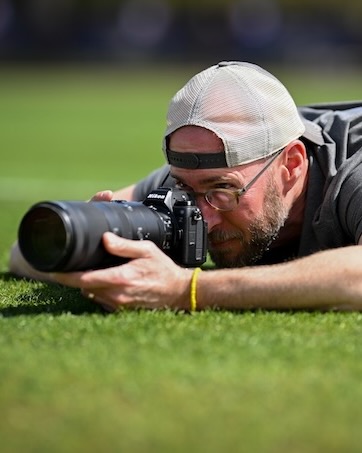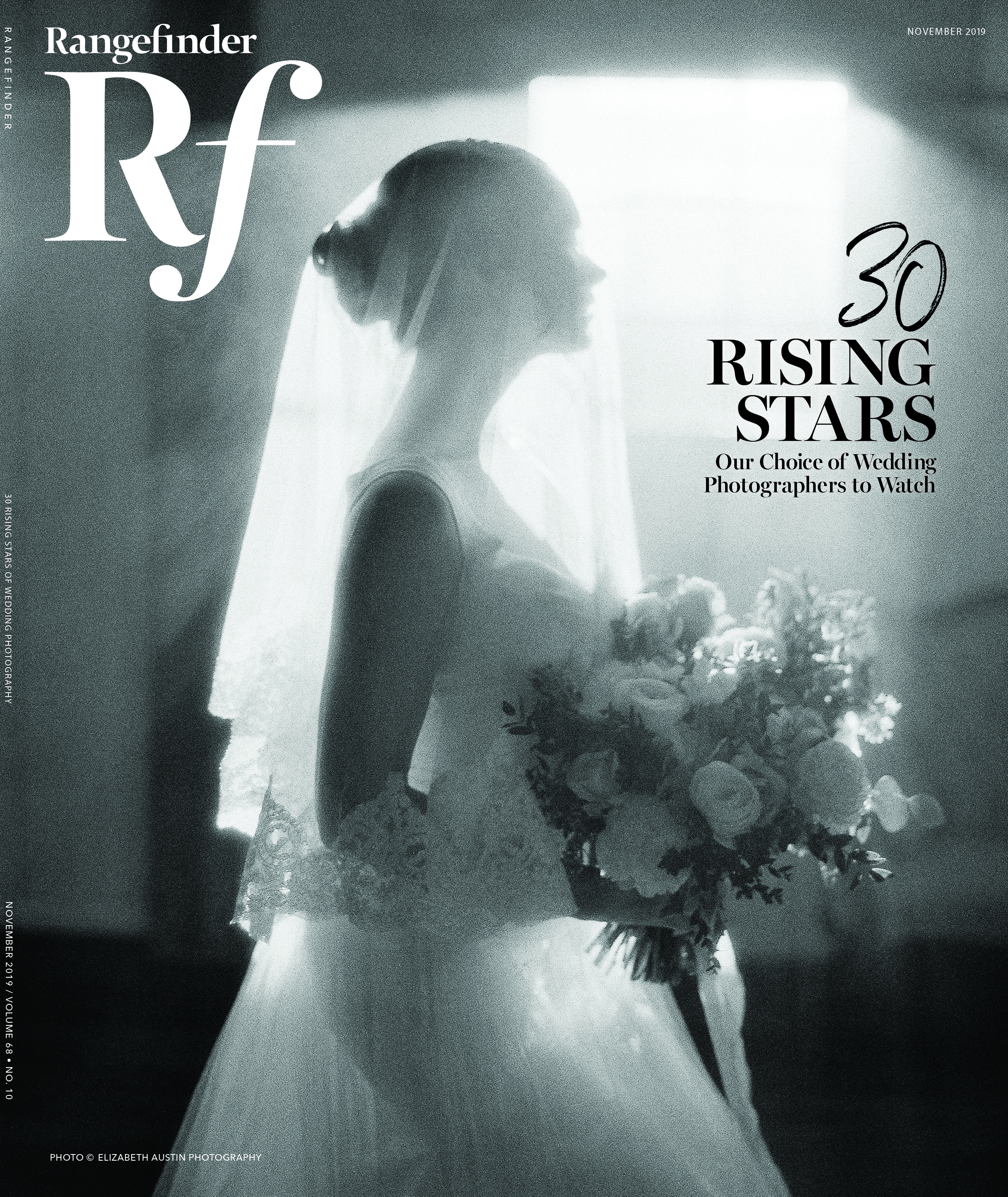Cameras
Nikon Z 7
The flagship of Nikon’s full-frame mirrorless lineup, the Z 7 boasts a 45-megapixel back-illuminated sensor with no optical low-pass filter and an ISO range of 64-25,600 (32-102,400 expanded). When using the FTZ lens mount adapter, stabilization is performed along three axes. You’ll frame your scene through a 3690K-dot OLED EVF with 100 percent frame coverage and .8x magnification. As for video, there’s full pixel readout when shooting 4K (3840 × 2160/30p) and you can output a 10-bit video signal from the HDMI output. If you record in the N-Log color profile, you can achieve up to 12 stops of dynamic range.
Price: $3,400
nikonusa.com
Olympus OM-D E-M1X
The newest Micro Four Thirds model from Olympus is basically an E-M1 Mark II on steroids. It has a built-in grip with a dual battery holder and dual card slots that’s robustly weather-sealed. It has a 20-megapixel image sensor and 121 all cross-type AF points. Like the E-M1 Mark II, it’s capable of a brisk 18 fps in continuous shooting but now offers a whopping 7.5 stops of image stabilization when using Sync IS compatible lenses from Olympus. Even when paired with a non-Sync IS lens, the E-M1X can offer seven stops of correction. The camera can record 4K video and has an anti-flicker mode that works at speeds up to 10 fps—a new benchmark.
Price: $3,000
getolympus.com
Fujifilm GFX 50R
Fujifilm’s mirrorless medium-format camera is a slimmed-down variant of its GFX 50S, built in a rangefinder style (which we love, naturally). One of the main differences between the two models is the size. The GFX 50R weighs 5.1 ounces less than the GFX 50S and the body is 25.0mm thinner than the GFX 50S (which was already fairly compact next to your traditional medium-format camera system). The GFX 50R is equipped with a 0.77x, 3.69M-dot OLED viewfinder positioned to the side so that users can keep one eye on their subject and the other in the viewfinder. Beyond its compact size, the 50R carries over almost all of the core features of the GFX 50S, including its 51.4-megapixel CMOS image sensor and X-Processor Pro image-processing engine.
Price: $4,500
fujifilmusa.com
Panasonic SR1
Panasonic’s first full-frame mirrorless camera still isn’t completely fleshed out yet, but we know it’s coming soon and will offer some impressive specs. Chief among them is a 47-megapixel full-frame sensor capable of 4K/60p video recording—a first for the category. It will support Panasonic’s dual- stabilization technology and have a pair of card slots and a triaxial, tilting LCD display. The SR1 will accept any Leica lens with an L mount, plus new lenses from both Panasonic and Sigma.
Price: tbd
shop.panasonic.com
Canon EOS R
As Canon’s first foray into full-frame mirrorless, this camera features a 30-megapixel sensor with a native ISO range of 100-40,000 (expandable to 50-102,400). It supports continuous shooting speeds up to 8 fps with focus fixed on the first frame or 5 fps with continuous autofocusing. The EOS R is notable among its competitors for the number of autofocusing points it has: 5,655 manually selectable points (up to f/11). It uses Canon’s Dual Pixel CMOS autofocusing system and can acquire focus in very low light, down to -6 EV. It also acquires focus quickly. The EOS R can record 4K movies (3840 x 2160) at 30p and full HD at 60p.
Price: $2,300
usa.canon.com
Sigma 40mm f/1.4 DG HSM Art
With an optical design aimed at minimizing axial and magnification chromatic aberration, Sigma promises this new Art lens will deliver plenty of sharpness while shooting wide open. Capable of resolving up to 8K resolutions during filming and plenty of pixels in still shooting, the lens is available for Sony E-mount cameras (as well as Canon and Nikon DSLRs). Its nine rounded aperture blades stop down to f/16, and the lens can focus on objects as close as 15.7 inches from the front of the lens with a magnification of 1:6.5.
Price: $1,399
sigmaphoto.com

Hasselblad XCD 80mm f/1.9
The fastest lens Hasselblad has ever built is designed for its X1D mirrorless medium-format camera. It features a twin motor drive to power autofocusing. It supports close focusing up to 28 inches and stops down to f/32. Like all of the other XCD lenses, the 80mm uses a central shutter for flash sync speeds up to 1/2000 sec. It will accept 77mm filters.
Price: $4,845
hasselblad.com
Zeiss Batis 2/40 CF
The 40mm f/2 Batis is built for Sony E-mount cameras and is able to focus on objects as close as 9.4 inches with a magnification ratio of 1:3.3. The lens supports autofocusing and features Zeiss’ T* coating to reduce reflections. It’s sealed against dust and moisture and has an OLED display to readout distance and depth of field information. It stops down to f/22.
Tokina FiRIN 20mm f/2 FE AF
The newest lens in Tokina’s lineup of Sony full-frame optics, the FiRIN 20mm supports autofocusing and Sony’s MF Assist functionality. Thanks to electronic contacts on the lens, you’ll enjoy in-camera aperture control, optical corrections and support for image stabilization. The lens’s nine aperture blades stop down to f/22, and you can focus on objects as close as 11 inches from the front of the lens.
Price: $949
tokinalens.com
Leica CL Street Kit
Leica’s CL is a compact, APS-C format mirrorless camera that’s now bundled in what Leica is dubbing a “Street Kit” that packages the Leica Summicron-TL 23mm f/2 ASPH lens with accessories. The CL sports a 24-megapixel sensor, a high-resolution electronic viewfinder and continuous shooting speeds up to 10 fps. It’s capable of recording 4K video at 30 fps or full HD video at 60 fps. You’ll have an ISO range of 100-50,000 and Wi-Fi for remote control or image transfers via the new Leica FOTOS app. The bundled 23mm f/2 lens delivers a 35mm-equivalent focal length of 35mm (how convenient) and can focus on objects as close as 13.7 inches. It’s compatible with forthcoming L-Mount cameras from Panasonic and Sigma.
Price: $4,195
us.leica-camera.com
Rokinon 35mm f/2.8 FE
Rokinon’s wide-angle Sony-mount lens offers autofocusing and multi-coatings to reduce flare and ghosting. It has a seven-blade aperture that stops down to f/22. The 35mm is capable of focusing on objects as close as 13.7 inches and accepts 49mm filters.
Price: $399
rokinon.com
Kipon Elegant
Kipon is the first third-party lens maker to offer lenses for both the EOS R and Nikon Z series. The new Elegant line consists of five f/2.4 prime lenses for both camera systems: a 24mm, 35mm, 50mm, 75mm and 90mm. All of the lenses will stop down to f/16.
Prices: starting at $325 (50mm)
kipon.com
Lensbaby Sol 22mm
Lensbaby’s background-bending Sol 22 is a 45mm (equivalent) tilting lens for Micro Four Thirds cameras that creates a circular area in focus surrounded by swirling bokeh. Simply identify your subject, tilt the lens toward it and focus using the focusing ring. If you want to get a bit more creative, there are a pair of hinged “bokeh blades” that can be moved in front of the lens to add subtle lines and textures to the areas of the image that are out of focus.
Price: $200
lensbaby.com
Sony 24mm f/1.4 GM
The 24mm f/1.4 is a member of the company’s premium G-Master line of E-mount optics. According to Sony, the new lens is the lightest and most compact in its class at 15.7 ounces and 3 x 3.64 inches. It uses Nano AR coating to reduce flare and ghosting and a pair of extreme aspherical (XA) elements to combat sagittal flare. The lens packs a new DDSSM (Direct Drive SSM) that delivers approximately three times greater thrust than the previous focus system for a faster, more accurate performance. You can focus on objects as close as .79 feet from the front of the lens. On the design front, there’s an aperture ring, a customizable focus hold button and a focus mode switch to bounce between automatic and manual focusing. There are 11 aperture blades that stop down to f/16.
Tamron 28-75mm f/2.8 Di III RXD
According to Tamron, its Sony E-Mount lens’s RXD (Rapid eXtra-silent stepping Drive) has been designed to strike a balance between speed and low noise so you won’t pick up AF sounds during video recording. The lens can focus on objects as close as 7.5 inches at the wide-angle zoom setting with a maximum magnification of 1:2.9. At telephoto, you can focus on objects as close as 15.3 inches from the lens with a magnification of 1:4. There’s a nine-blade aperture that stops down to f/22. Tamron’s lens supports all of Sony’s lens features such as in-camera lens correction, eye AF, Direct Manual Focus (DMF), camera-based lens firmware updates and Fast Hybrid AF. You’ll enjoy weather resistance and Fluorine coating on the front lens element to make it easier to clean.
Price: $799
tamron-usa.com
Related: Great New DSLR Cameras and Lenses
Heads Up: Where Photo Gear Is Going Next Year
15 Telephoto Lenses for Mirrorless and DSLR Photographers



















